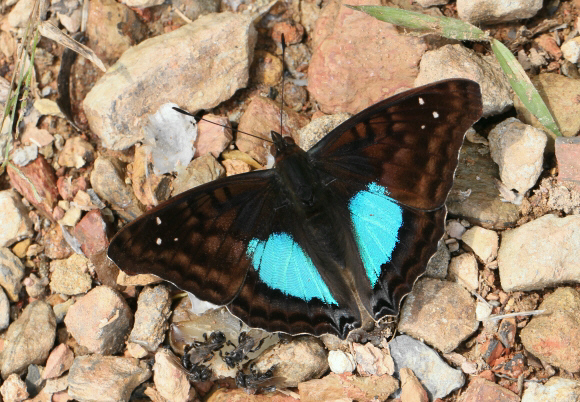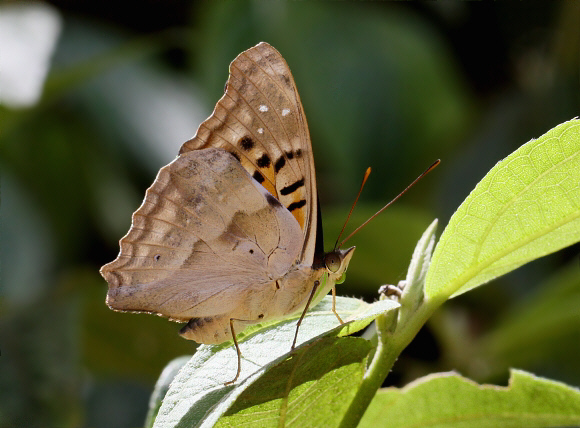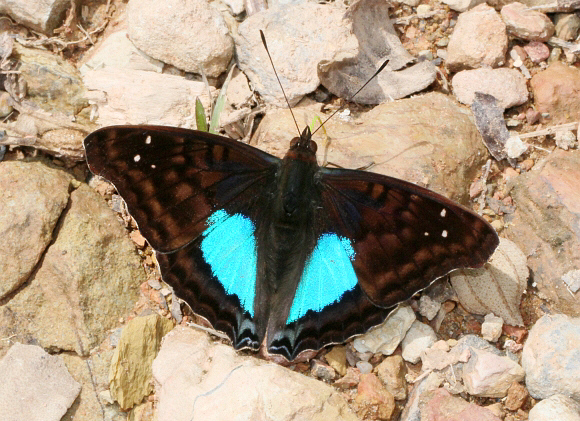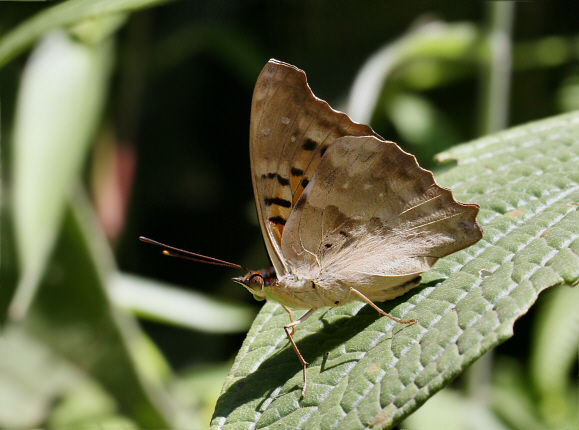
Introduction
The genus Doxocopa comprises of 15 medium-large neotropical butterflies from the Apaturini – the same tribe to which the Apatura Purple Emperors of Europe belong.
Male Doxocopa butterflies reflect a brilliant iridescence from the upperside wings. In some species such as felderi this is deep purple, while in others it changes from dazzling cyan or turquoise to an intense electric blue depending on the angle of view and strength / direction of the sunlight.
Females lack the iridescence. In several species the females are similar in appearance to Adelpha, being marked with bands of orange and / or white on a brown ground colour.
Doxocopa cyane is found from Mexico to Bolivia and Argentina.

Habitats
This species inhabits cloudforest at elevations between about 600-1800m.
Lifecycle
The caterpillar feeds on Celtis species ( Ulmaceae ). When fully grown it is green, strongly tapered towards the anal segment, and has a pair of forward-projecting horns on its head. The chrysalis is probably similar to that of other Apaturines, which are typically flattened laterally, arched dorsally, and superbly camouflaged as living or dead foliage.

Adult behaviour
Males are strongly territorial. They perch on high foliage, and periodically swoop down with great speed and agility to investigate rotting fruit, dung, urine or carrion on the ground. They are solitary and nervous, but after a few minutes will usually accept human presence. They are most often seen when visiting wet muddy patches and roadside ditches or seepages. Sightings of females are very rare, as they spend most of their time high in the forest canopy.

